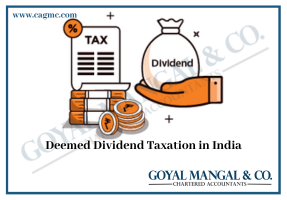 Foreign trade and foreign investment are significant drivers for economic growth and prosperity. In today’s world of the interconnection of trade distribution both these terms involve cross-border transactions. These both have different purposes and unique features. In this article, we are discussing the differentiating between foreign trade and foreign investment. Let’s take a look into two crucial elements that shape the global market and economy.
Foreign trade and foreign investment are significant drivers for economic growth and prosperity. In today’s world of the interconnection of trade distribution both these terms involve cross-border transactions. These both have different purposes and unique features. In this article, we are discussing the differentiating between foreign trade and foreign investment. Let’s take a look into two crucial elements that shape the global market and economy.
Table of Contents
What do you mean by Foreign Trade?
Foreign trade also known as international trade, is which transfer of goods and services between countries. International trade also plays a crucial role in the global market and economy. It includes the exportation and importation of several goods, services, and commodities. Foreign trade is a critical element of international commerce and business. There are certain features of foreign trade:
- Exportation and importation: Foreign trade includes the selling and buying of products and services between countries.
- Exchange of currency: Foreign trade transactions generally need the exchange of currencies. It influences the profitability and cost of trade.
- International trade organizations: Several international institutes like the World Trade Organization (WTO). It plays a significant role in encouraging and regulating world trade, establishing trade rules, and facilitating dispute resolution.
- Impact on economy: It affects the economy of the country positively. It provides the development economy, increases competitiveness, gives access to a wider range of goods and services for consumers, and creates jobs.
Top 10 Export Products from India
Glimpses of Foreign Investment
Foreign investment is also referred to as foreign direct investment (FDI) and international investment. It means that the capital allocation, assets, or resources in businesses, assignments, or finance situated in a foreign country by a business, individual or government enterprises. The main motive of FDI is to attain a lasting interest or foreign entity stake, mainly with the expectation of generating income, achieving particular strategic goals, or acquiring control. There are some key aspects of foreign investment are:
- Capital Allocation: Foreign investment involves the deployment of financial resources in a foreign country. It can take several ways like acquiring real estate, setting up subsidiaries, buying shares in foreign companies, sub-officed in another country, or giving finance to foreign entities.
- Ownership or Control: Foreign investors may seek a level of ownership or control in the foreign entity they invest in. This could involve acquiring a significant ownership stake, gaining a seat on the board of directors, or influencing strategic decisions.
- Profit and Returns: Investors in foreign businesses aim to generate profits or returns on their investments. These returns are as capital appreciation, interest, dividends, or other income generated by the foreign investment.
- Strategic and Diversification Goals: Foreign investment provides several purposes like investment portfolios in diversification, obtaining strategic assets or technologies, entry into new markets, extending business risks and obtaining assets or technologies from various countries.
Incorporation of Foreign Company in India
Differentiating between Foreign Trade and Foreign Investment
These two are different economic activities, which include cross-broader transactions, however provide different motives and characteristics. Here differentiating between foreign trade and foreign investment is mentioned in tabular form:
| S. No. | Particulars | Foreign Trade | Foreign Investment |
|
|
Nature | Short-term and transactional | Long-term and investment |
|
|
Motive | Movement of products and services internationally, mainly to meet and satisfy consumer’s demands. | Motive is to create a lasting interest or stake in a foreign venture, with attaining financial benefits, control or influence. |
|
|
Candidates | Generally, there are consumers, traders, exporters and importers | It includes international corporations, investors, and financial associations |
|
|
Risks | Risk factors are barriers to trade, market volatility, and fluctuations in currency rate | Economic, political, and regulatory risks in the host country. |
|
|
Effect on economy | It encourages competitiveness, employment, and economic development. | It contributes to growth in the economy, foreign exchange, and technological transfer. |
|
|
Goal | It increases the goods and services flow, improves customer welfare, and fosters economic development. | It generates returns on investment, entry into new markets, and attains strategic assets. |
|
|
Examples | Exporting and importing of goods and services like agriculture products, electronics, and automobiles. | Direct investments like real estate in a foreign country, setting up foreign subsidiaries and purchasing stocks. |
|
|
Organization’s name | International trade organizations such as WTO. | International corporations and FDI associations. |
Takeaway
The differentiation between foreign trade and foreign investment is dynamic for the economy and marketplace of the world. Both aspects are integral for multinational entities, each has its different risks, purposes, and timeframes. In today’s era, it is significant to understand the difference between these two terms as they contribute to the ever-evolving world economic forum. By identifying the roles of these two, one can navigate the complexities of international business in a clearer and better manner.







